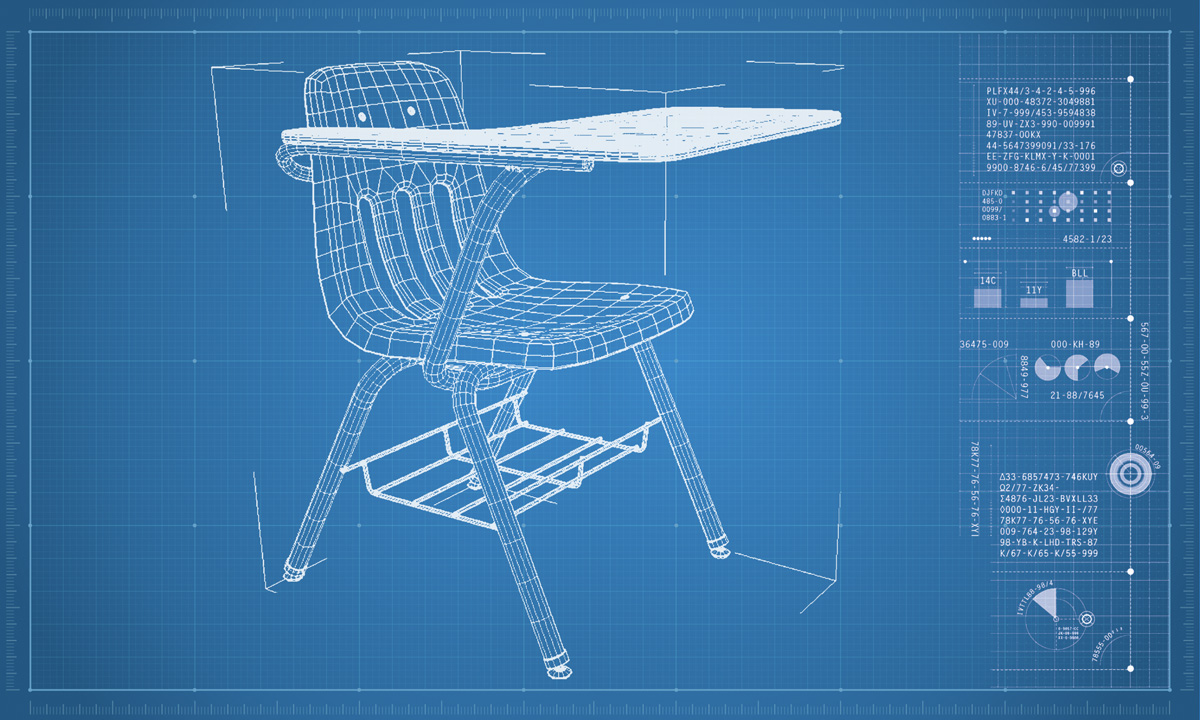It’s Time to Launch a National Initiative to Create the New American High School
Robin Lake: We must start thinking, talking and acting bigger when it comes to preparing teens for both college and career.

Get stories like this delivered straight to your inbox. Sign up for The 74 Newsletter
This essay was originally published as part of the Center on Reinventing Public Education’s 2023 “State of the American Student” report. As part of the effort, CRPE asked 14 experts from various sectors to offer up examples of innovations, solutions or possible paths forward as education leaders navigate the current crisis. (See all the perspectives)
The American high school is broken. The pandemic underscored just how broken. American teens are—as a September 2023 Gallup poll shows—disengaged, stressed, and questioning the value of high school and college. At the same time, they are hungry to make a difference in the world and to use new technologies and ideas toward that end.
In 2013, Ted Sizer wrote a book called The New American High School. Large national foundations invested in smaller, more personalized high schools. The pandemic made clear it’s past time to finally remake high school, but with an eye toward the future.
Rather than seek to provide a comprehensive set of learning experiences under one roof, the new American high school would connect students to meaningful work in their communities and to expert knowledge around the globe.
Rather than dumb down concepts or activities to make them easier for teenagers, it would support young people to do meaningful work that makes real contributions and leads to credentials that hold weight in the adult world.
Rather than sort students into tracks or marshaling all of them toward a single objective, it would provide every student adult guidance and technological support to understand their own conception of a good life, and provide them with the support, connections, knowledge, and skills to pursue that life—and to change course where necessary.
Rather than focus on a centuries-old curriculum and memorization, it would recognize the transformative forces of AI technology, climate change, and geopolitics and prepare students to thrive, collaborate, and innovate in a rapidly changing world. Yes, students would still study Sophocles, Shakespeare, and Newton, but in a more relevant, contemporary context.
Arizona State University’s Michael Crow conceived something similar for the postsecondary world—the New American University. These institutions would be designed for access rather than exclusivity, and would develop knowledge that could improve student’s communities and address global challenges.
New career and technical education (CTE) programs popping up across the country provide a great starting point. They’re building tighter integrations between high school and postsecondary education, delivering industry-recognized credentials on the way to graduation, resourcing students through college via learn-and-earn programs, and developing students’ social capital to strengthen their support circles and professional networks.
Seamless and permeable pathways
It is key that the New American High School does not place students into tracks or find them in dead-ends. Instead of “tracks,” there should be a seamless and permeable set of pathways between high school, college, and career.
To provide a few examples:
- Colorado’s Homegrown Talent Initiative is a grant-funded program designed to help rural districts create career-relevant learning experiences aligned to the needs and aspirations of their local economies. Participating districts have redefined student graduation requirements, designed new courses, integrated career exploration into existing classes, and created new learning opportunities via internships with local industry and dual enrollment in local higher education institutions.
- Seckinger High School in Gwinnett County, Georgia, is the district’s first artificial intelligence themed high school and is part of a broader district vision to foster excellence and a sense of belonging in every school. Once the school opens, students will receive a college preparatory curriculum that is taught through the lens of artificial intelligence. Students will also be able to pursue an education in developing artificial intelligence.
- Indiana’s Purdue Polytechnic High School is a public charter school network designed to prepare students for careers in the STEM fields. The school implements hands-on and project-based learning, industry and higher ed partnerships, and a flexible and personalized approach. Students leave high school with college credit, in-demand industry credentials, as well as preferred admission to nine out of the 10 colleges at Purdue University.
- Another Indiana charter school, GEO Academies, offers a College Immersion Program, a hyper personalized dual enrollment program where high school students take college classes on the college campus of their choice beginning as early as the ninth grade. GEO pays for everything and provides the academic, social, and emotional supports so that kids learn real-life skills and grow the confidence necessary to earn college degrees—and a path to escaping poverty—before they graduate from high school. When they are on the high school campus, GEO students can engage in direct, teacher-led instruction, independent learning and practice, and teacher-assisted small group instruction.
- At the state level, Colorado, Delaware, Indiana, Louisiana, and Virginia are moving toward more coherent state-wide career pathways, using federal funds and industry partnerships to create a more permeable path between high school, college, and career. (Colorado Governor Jared Polis and Virginia Secretary of Education Aimee Guidera elaborate on their states’ work in essays on pages 76 and 39, respectively.)
There is plenty of evidence that the current American high school is outdated and irrelevant. The best source of data is coming from students themselves. Adolescents report feeling isolated, bored, and disengaged in school. In this volume, we report plenty of evidence that they are calling for change and they are voting with their feet by failing to attend school or dropping out to get a job in larger numbers than ever.
Despite the very obvious need to update and refresh secondary education, high schools are notoriously resistant to change. Shifting existing curriculum, coursework, instructional strategies, counseling, industry partnerships, and teacher expertise are all onerous prospects. What’s more, the old model of high school is hard-wired: core graduation course requirements are geared toward a “college for all” mentality. Do students intent on pursuing a career in music, for instance, really need to take calculus? Schedules do not easily shift to accommodate a student who must leave during the day for an apprenticeship. If a student wants to take an online pre engineering course in place of a course offered by their high school, they must pay for it themselves.
Much of schools’ inability to change stems from outdated state policy. State teacher licensing laws often prevent would-be teachers with industry expertise from teaching credit-earning classes. State graduation requirements often do not allow students to count industry credentials toward graduation. Funding models are outdated and assume high school students will receive all of their education in one building.
A New National Initiative
To overcome these and many other barriers, we need a new national initiative for the New American High School. We need more states to follow the lead of vanguard states such as Colorado and Virginia—and for these states to continue to push for lasting changes to the core aims and structures of their schools.
The growing movement to add or update career and technical education is a good start, but ultimately, career focus needs to grow rapidly from small, peripheral programs to a widespread, core element of all secondary education.
As the other essays in this report suggest, we need to start thinking, talking, and acting bigger. Career preparation in high school is essential for every student. At the very least, students should leave high school with a guarantee that they have mastered the core skills the business and nonprofit sectors say they will need for the middle-class jobs of the future.
We can do this, but the business community, philanthropies, governors, and state school chiefs must lead. Here are some first steps that could make a real difference:
- Create a national council on the New American High School to set national goals and guide federal and state funding strategies
- Support more state- and district-level initiatives for business-education partnerships like Colorado, Louisiana, and Virginia have done
- Incentivize every state to collect data across states on long-term outcomes like Indiana has done
- Build a global network of schools and school districts that are committed to the New American High School
- Create a national research center on the New American High School to amass evidence on innovations, best practices, and policies to support schools and states that want to re-tool their high schools
Tinkering around the edges of American high schools won’t ensure that every student graduates on a viable pathway to a family-sustaining career. We don’t need to remake career and technical education—we need to remake high school.
Skeptics will understandably ask: how is this possible when school systems are struggling just to keep their heads above water, grappling with record levels of mental health and behavior challenges and declining achievement?
My response to the skeptics: high schools across the country began this transformation before or even during the pandemic. They did so because they know there is no alternative but to shift toward the future. They know they must catch kids up, but they also know that the best way to do so is to engage them in deep, meaningful, and relevant ways. With the right help from the federal government, states, businesses, and philanthropies, this is doable.
But the first step on any road to recovery is to admit that there’s a problem. Given the reality of the past few years, can anyone really argue that the American high school has not reached its bottom?
See more from the Center on Reinventing Public Education and its 2023 “State of the American Student” report.
Get stories like these delivered straight to your inbox. Sign up for The 74 Newsletter

;)
